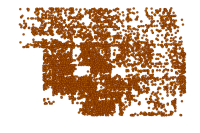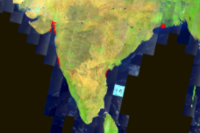An Item object in the GIS will often have binary or textual data provided in the form of resource files, and to manage these files we've introduced a ResourceManager helper class. When an Item is initialized, this ResourceManager instance is created and stored as the resources property of that Item. This property then provides access to a number of methods useful for viewing and modifying the files, including: list(), get(), add(), update(), remove() and export().
Users will generally not interact with the resources property directly, nor will they create a ResourceManager instance directly. Instead they will more often create classes and call methods which in turn initialize a ResourceManager instance for a portal Item and leverage these methods under the hood.
While the adding, updating, and removal of these resource files should ideally be accomplished through safer, higher-level functions and interfaces, users might be interested in directly calling the list(), get() and export() methods directly. Let's take a look at how we can use these methods and what we should expect as a response.
Import Libraries
import os
import datetime
import pandas as pd
import arcgis
from arcgis.gis import GISarcgis.__version__'1.9.1'
Connect to ArcGIS Online
Connect to your ArcGIS Online portal with your profile to access the portal items available to you.
profile_name = "my_dev_profile"
gis = GIS(profile=profile_name)
gis.users.meListing Item Resources
The resources belonging to a particular Item object can be returned using the list() method. This will return a list of dictionaries, where each dictionary represents a resource and contains information including the resource file name and size as well as the time it was created.
Here we will query for a StoryMap object belonging to the current profile by using the gis.content.get() method and providing the id of that item.
sm_id = 'f1b6a842fbea45bca693c2fe6622bf70'
sm_item = gis.content.get(sm_id)
sm_itemNote that to get a full list of the portal items owned by the current user, we can use the gis.content.search() method as below:
query_string = f"owner: {gis.users.me.username}"
user_items = gis.content.search(query=query_string, max_items=-1)
print(len(user_items), 'items returned belonging to current user')
user_items[:5]1240 items returned belonging to current user
[<Item title:"Automate Road Surface Investigation Using Deep Learning" type:Notebook owner:api_data_owner>, <Item title:"Pick_Pizza_Shops_San_Francisco" type:Service Definition owner:api_data_owner>, <Item title:"ofek_aerial_imagery_for_deadsea" type:Service Definition owner:api_data_owner>, <Item title:"england_weather_stations" type:Shapefile owner:api_data_owner>, <Item title:"Community_College_Dist" type:Shapefile owner:api_data_owner>]
We can then call the list() method to return a list of this Items resources.
sm_resources = sm_item.resources.list()
print(len(sm_resources), 'resources found for selected item')
sm_resources13 resources found for selected item
[{'resource': '1584837341913.jpeg',
'created': 1610462633000,
'size': 3565854,
'access': 'inherit'},
{'resource': '1584840733269.png',
'created': 1610462633000,
'size': 36384,
'access': 'inherit'},
{'resource': '1584977960300.png',
'created': 1610462633000,
'size': 363718,
'access': 'inherit'},
{'resource': '1584995889818.png',
'created': 1610462634000,
'size': 13850,
'access': 'inherit'},
{'resource': '1584995908437.png',
'created': 1610462634000,
'size': 14455,
'access': 'inherit'},
{'resource': '1584996591808.png',
'created': 1610462634000,
'size': 11135,
'access': 'inherit'},
{'resource': '1584996631292.png',
'created': 1610462634000,
'size': 11129,
'access': 'inherit'},
{'resource': '1585069439012.png',
'created': 1610462635000,
'size': 6470,
'access': 'inherit'},
{'resource': '1585080995091.png',
'created': 1610462635000,
'size': 152744,
'access': 'inherit'},
{'resource': '1585081014377.png',
'created': 1610462635000,
'size': 143621,
'access': 'inherit'},
{'resource': '1596760258881.jpeg',
'created': 1610462635000,
'size': 148737,
'access': 'inherit'},
{'resource': 'oembed.json',
'created': 1610462636000,
'size': 676,
'access': 'inherit'},
{'resource': 'oembed.xml',
'created': 1610462636000,
'size': 998,
'access': 'inherit'}]We can put this list into a Pandas DataFrame for easily comparing and analyzing the different objects returned.
pd.DataFrame(sm_resources)| resource | created | size | access | |
|---|---|---|---|---|
| 0 | 1584837341913.jpeg | 1610462633000 | 3565854 | inherit |
| 1 | 1584840733269.png | 1610462633000 | 36384 | inherit |
| 2 | 1584977960300.png | 1610462633000 | 363718 | inherit |
| 3 | 1584995889818.png | 1610462634000 | 13850 | inherit |
| 4 | 1584995908437.png | 1610462634000 | 14455 | inherit |
| 5 | 1584996591808.png | 1610462634000 | 11135 | inherit |
| 6 | 1584996631292.png | 1610462634000 | 11129 | inherit |
| 7 | 1585069439012.png | 1610462635000 | 6470 | inherit |
| 8 | 1585080995091.png | 1610462635000 | 152744 | inherit |
| 9 | 1585081014377.png | 1610462635000 | 143621 | inherit |
| 10 | 1596760258881.jpeg | 1610462635000 | 148737 | inherit |
| 11 | oembed.json | 1610462636000 | 676 | inherit |
| 12 | oembed.xml | 1610462636000 | 998 | inherit |
We can see that this StoryMap item returned resources of a couple different file types, including several jpeg and png files as well as a json and xml file.
Let's now look at a Feature Layer Collection object and see what types of resources it has available.
fs_id = '3d95a6aa9fa34243822138c7a9efc6b6'
fs_item = gis.content.get(fs_id)
fs_itempd.DataFrame(fs_item.resources.list())| resource | created | size | access | |
|---|---|---|---|---|
| 0 | jobs/jf0e25a4606364e6992c440cf955b6e15.json | 1624159076000 | 7741 | inherit |
As we can see, this Feature Layer Collection has only one resource file available - a single json file.
It is also possible for an Item to have no resource files, as we'll see when querying the Web Map object below. In this case, the list() method will return an empty list.
wm_id = 'a3e8eda445c34e95bdef7aa75bdd8a77'
wm_item = gis.content.get(wm_id)
wm_itemwm_item.resources.list()[]
Analyzing Resource File Data
Let's look at what we can do with some of the raw resource outputs from the list() method. Here we create a DataFrame object with the resources returned from the StoryMap object earlier.
sm_df = pd.DataFrame(sm_resources)
print(sm_df.shape)
sm_df(13, 4)
| resource | created | size | access | |
|---|---|---|---|---|
| 0 | 1584837341913.jpeg | 1610462633000 | 3565854 | inherit |
| 1 | 1584840733269.png | 1610462633000 | 36384 | inherit |
| 2 | 1584977960300.png | 1610462633000 | 363718 | inherit |
| 3 | 1584995889818.png | 1610462634000 | 13850 | inherit |
| 4 | 1584995908437.png | 1610462634000 | 14455 | inherit |
| 5 | 1584996591808.png | 1610462634000 | 11135 | inherit |
| 6 | 1584996631292.png | 1610462634000 | 11129 | inherit |
| 7 | 1585069439012.png | 1610462635000 | 6470 | inherit |
| 8 | 1585080995091.png | 1610462635000 | 152744 | inherit |
| 9 | 1585081014377.png | 1610462635000 | 143621 | inherit |
| 10 | 1596760258881.jpeg | 1610462635000 | 148737 | inherit |
| 11 | oembed.json | 1610462636000 | 676 | inherit |
| 12 | oembed.xml | 1610462636000 | 998 | inherit |
To return a single row in our DataFrame we can use the loc[] property by providing the corresponding index value in the leftmost column.
sample_resource = sm_df.loc[0]
sample_resourceresource 1584837341913.jpeg created 1610462633000 size 3565854 access inherit Name: 0, dtype: object
The created value returned with resource objects are in the form of a POSIX timestamp, which is an integer corresponding to the number of seconds since the current epoch began. For more information see here. To convert this integer to a more familiar representation, we can use the datetime module along with its fromtimestamp() method.
dt = datetime.datetime.fromtimestamp(int(sample_resource.created/1000))
dtdatetime.datetime(2021, 1, 12, 9, 43, 53)
Our result is a datetime object, which we can display in string format with the print() command.
print(dt)2021-01-12 09:43:53
This string format is also how the datetime object will render in either a Pandas DataFrame or Series. Using the apply() method we can create a new Series of datetime objects which correspond to the values in the created column. For more information on the apply() method see here.
datetimes = sm_df.created.apply(lambda x: datetime.datetime.fromtimestamp(int(x/1000)))
datetimes0 2021-01-12 09:43:53 1 2021-01-12 09:43:53 2 2021-01-12 09:43:53 3 2021-01-12 09:43:54 4 2021-01-12 09:43:54 5 2021-01-12 09:43:54 6 2021-01-12 09:43:54 7 2021-01-12 09:43:55 8 2021-01-12 09:43:55 9 2021-01-12 09:43:55 10 2021-01-12 09:43:55 11 2021-01-12 09:43:56 12 2021-01-12 09:43:56 Name: created, dtype: datetime64[ns]
We can then insert this Series as a new column in our DataFrame using the insert() method.
sm_df.insert(2,'created_datetime',datetimes)
sm_df| resource | created | created_datetime | size | access | |
|---|---|---|---|---|---|
| 0 | 1584837341913.jpeg | 1610462633000 | 2021-01-12 09:43:53 | 3565854 | inherit |
| 1 | 1584840733269.png | 1610462633000 | 2021-01-12 09:43:53 | 36384 | inherit |
| 2 | 1584977960300.png | 1610462633000 | 2021-01-12 09:43:53 | 363718 | inherit |
| 3 | 1584995889818.png | 1610462634000 | 2021-01-12 09:43:54 | 13850 | inherit |
| 4 | 1584995908437.png | 1610462634000 | 2021-01-12 09:43:54 | 14455 | inherit |
| 5 | 1584996591808.png | 1610462634000 | 2021-01-12 09:43:54 | 11135 | inherit |
| 6 | 1584996631292.png | 1610462634000 | 2021-01-12 09:43:54 | 11129 | inherit |
| 7 | 1585069439012.png | 1610462635000 | 2021-01-12 09:43:55 | 6470 | inherit |
| 8 | 1585080995091.png | 1610462635000 | 2021-01-12 09:43:55 | 152744 | inherit |
| 9 | 1585081014377.png | 1610462635000 | 2021-01-12 09:43:55 | 143621 | inherit |
| 10 | 1596760258881.jpeg | 1610462635000 | 2021-01-12 09:43:55 | 148737 | inherit |
| 11 | oembed.json | 1610462636000 | 2021-01-12 09:43:56 | 676 | inherit |
| 12 | oembed.xml | 1610462636000 | 2021-01-12 09:43:56 | 998 | inherit |
We can also use the value_counts() method in pandas to get a breakdown of the number of occurences for each value in a particular Series (e.g. a column in a DataFrame). Below we parse the file extension from values in the resource column as a new Series object and use value_counts() to then get the number of each file type.
sm_df.resource.apply(lambda x: x.split('.')[-1]).value_counts()png 9 jpeg 2 json 1 xml 1 Name: resource, dtype: int64
Exporting Resources
Also included in the ResourceManager class is a method to export all resources as a zip file. This export() method takes two parameters: save_path which declares the directory to save the zip file in and file_name which declares what name to give the zip file output. If no values are provided for either the save_path or file_name paramaters, then the zip file is uploaded to the default directory used for temporary files through tempfile.gettempdir() and given a random 6 character name.
Here we download the StoryMap resources as a zip file in our local directory using the os.getcwd() method.
zip_name = "storymap_resources.zip"
sm_item.resources.export(save_path=os.getcwd(), file_name=zip_name)
# Check that the current directory now has that zip output
os.path.isfile(zip_name)True
If we'd like to download just a single resource file, then we can use the get() method and provide the file name. Note that if the resource file is of type json and there are no values provided for the out_folder and out_file_name parameters (which behave similarly to save_path and file_name above) then the result will be stored in local memory as a dictionary object rather than saved to a json file. This behaviour can be avoided, however, by setting try_json=False.
For more information on using the get() method see here.
# Get the json file at position 11 in the resource DataFrame above
file_name = sm_df.loc[11].resource
print(file_name)
# Output the dictionary returned from retrieving this json via get()
sm_item.resources.get(file_name)oembed.json
{'version': '1.0',
'type': 'rich',
'title': 'Aufdecken von Mustern bei Flächenbränden rund um den Globus',
'url': 'https://storymaps.arcgis.com/stories/0f5ef7b723cd410f8e4e298d716bcd73',
'provider_name': 'ArcGIS StoryMaps',
'provider_url': 'https://storymaps.arcgis.com',
'width': 800,
'height': 600,
'thumbnail_url': 'https://www.arcgis.com/sharing/rest/content/items/0f5ef7b723cd410f8e4e298d716bcd73/info/thumbnail/ago_downloaded.jpg/',
'thumbnail_height': '266',
'thumbnail_width': '400',
'html': '<iframe src="https://storymaps.arcgis.com/stories/0f5ef7b723cd410f8e4e298d716bcd73" width="800" height="600" scrolling="yes" frameborder="0" allowfullscreen></iframe>',
'cache_age': 86400}


